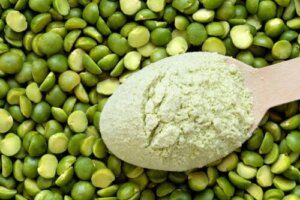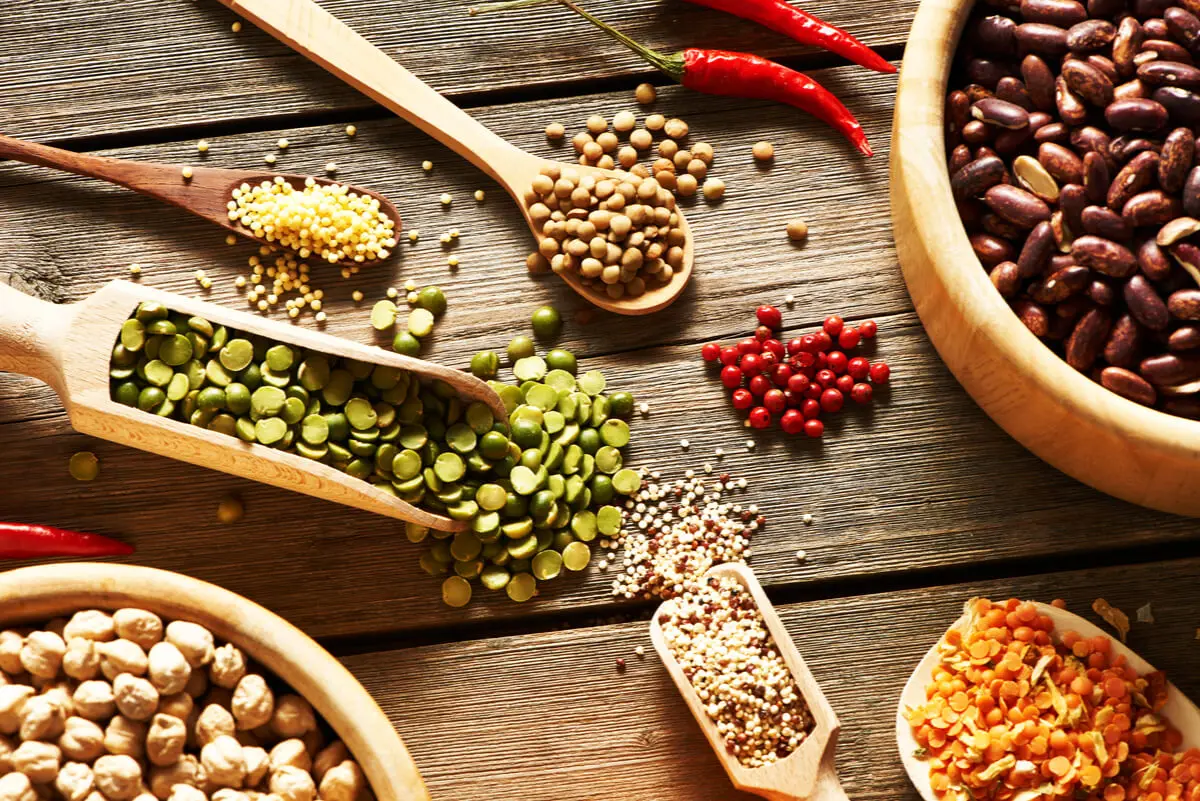Legume Flours: Varieties and Benefits


Written and verified by the nutritionist Saúl Sánchez Arias
Legume flours are products that have health benefits when consumed on a regular basis. They are an excellent alternative to other more processed or refined flours, such as wheat flour.
Before starting, it should be noted that nutrition experts recommend the presence of legumes in the diet at least a couple of times a week. They are edibles that provide complex carbohydrates, protein, and a good handful of essential micronutrients of high quality.
The benefits of legume flours
Next, we’re going to discuss the main benefits of including legume flour in routines. Remember that it is essential that it appears within the context of a varied and balanced dietary pattern.
They improve muscle function
Legume flours have more protein than that obtained from wheat or corn. This is key to meeting daily protein requirements, which is crucial for preventing complex pathologies such as sarcopenia. This is evidenced by research published in the journal Nutrients.
To meet the needs of sedentary people, it would be necessary to guarantee an intake of at least 0.8 grams of protein per kilogram of weight per day. When we talk about athletes, the requirements can be easily doubled.
Some university theses report advances in food technology that are facilitating the development of legume flours with high protein content. For this purpose, the main raw materials are lentils, chickpeas, and peas.

They contribute to preventing constipation
Fiber is a key component of legume flours. It’s suggested that at least 25 grams of this element should be ingested every day so that the intestinal tract functions correctly. Thanks to it, constipation situations could be avoided.
On the other hand, fiber also serves as an energetic substrate for the bacteria that live in the digestive tract. This prevents loss of density in the microbiota, which could affect nutrient absorption processes.
Recent research (Spanish link) has shown the positive effect of legume flours on the microbiota. Fermentation seems to be a key step in these biochemical processes. Thanks to chemical reactions in the intestine, some anti-inflammatory substances are increased in the body.
In terms of digestibility, it’s important to note that flours are easier to digest than legumes as such. Some of the fiber has been broken down by the mechanical grinding processes. Therefore, they are less likely to cause gas or intestinal discomfort.
We think you may be interested in reading this, too: What Kinds of Nutrients Can You Get from Legumes?
They help improve energy levels
Carbohydrates are the main energy substrate for high-intensity activities. It’s always preferable that most of them are of the complex type.
For this, nothing better than the consumption of tubers, rice, and legumes. Even cereals are a good alternative.
These carbohydrates from legumes have a satiating capacity that would be beneficial in weight loss plans. With the types of flour in question, it’s possible to reduce hunger and obtain enough energy for daily activities.
Like this article? You may also like to read: A Vegetarian Diet for Children: Advantages and Disadvantages
The types of legume flours
Nowadays, several types of pulse flours can be found in the supermarket. The most common is chickpea flour, followed by lentil flour.
However, there is also pea flour, carob flour, peanut flour, and soybean flour. They can be consumed as such or included in very different culinary preparations.
They are all very versatile in the kitchen.
Among the recipes that are suitable for pulse flours, the following are worth mentioning:
- Pasta
- Snacks
- Soups
There are certified gluten-free options for people who have problems with this protein. The market of each country has particular legislation for products to obtain this certification.

Legume flours: An option with several benefits
Legume flours are an option with several health benefits. They are valid alternatives to the classic wheat or corn flour.
They have less impact on blood glucose levels and manage to provide essential nutrients of very high quality, so they are recommended in the context of almost any diet. They’re even versatile from a culinary point of view, and it’s not difficult to make a wide variety of dishes and snacks with them.
Keep in mind that ensuring a healthy intake of legumes – at least 2 times a week – will be very positive to consolidate a good state of health over the years. These fresh foods not only improve digestive function but can also prevent the development of chronic diseases associated with the digestive tract.
All cited sources were thoroughly reviewed by our team to ensure their quality, reliability, currency, and validity. The bibliography of this article was considered reliable and of academic or scientific accuracy.
- Prokopidis K, Cervo MM, Gandham A, Scott D. Impact of Protein Intake in Older Adults with Sarcopenia and Obesity: A Gut Microbiota Perspective. Nutrients. 2020;12(8):2285. Published 2020 Jul 30. doi:10.3390/nu12082285
- Gill SK, Rossi M, Bajka B, Whelan K. Dietary fibre in gastrointestinal health and disease. Nat Rev Gastroenterol Hepatol. 2021;18(2):101-116. doi:10.1038/s41575-020-00375-4
- Valencia Zapata, Luisa Nathalia, and Andrea Montoya Giraldo. “Harinas no convencionales con alto contenido proteico elaboradas a partir de legumbres y sus aplicaciones en la industria de alimentos: revisión bibliográfica.” (2021).
- Zarate, Gabriela del Valle, and Gabriel Dario Saez. “Fermentación de harinas de legumbres con bacterias lácticas: alternativa de procesamiento para potenciar sus características nutricionales y tecnofuncionales.” (2020).
- Planes Muñoz, David. “Comunicaciones Póster.-Análisis de la capacidad saciante de legumbres.” II Jornadas Doctorales de la Universidad de Murcia (2020).
This text is provided for informational purposes only and does not replace consultation with a professional. If in doubt, consult your specialist.








